Localization. Globalization. Internationalization.
That’s a lot of -izations for your global organization (see what we did there?). Building an international expansion strategy requires all three. Today, we’ll unpack the differences between localization and globalization, two key elements of a strategy that works for your business — and see how they fit with internationalization.
Localization (l10n) vs. globalization (g11n)
To be successful when expanding your business to different countries, you need both localization and globalization.
What is localization?
Localization is the process of adapting a piece of content's full meaning for a target market, including translation, associated imagery, and cultural elements that influence how your content will be perceived.
On a technical level, that means you might see a website like Nike use the exact same components in a given webpage:
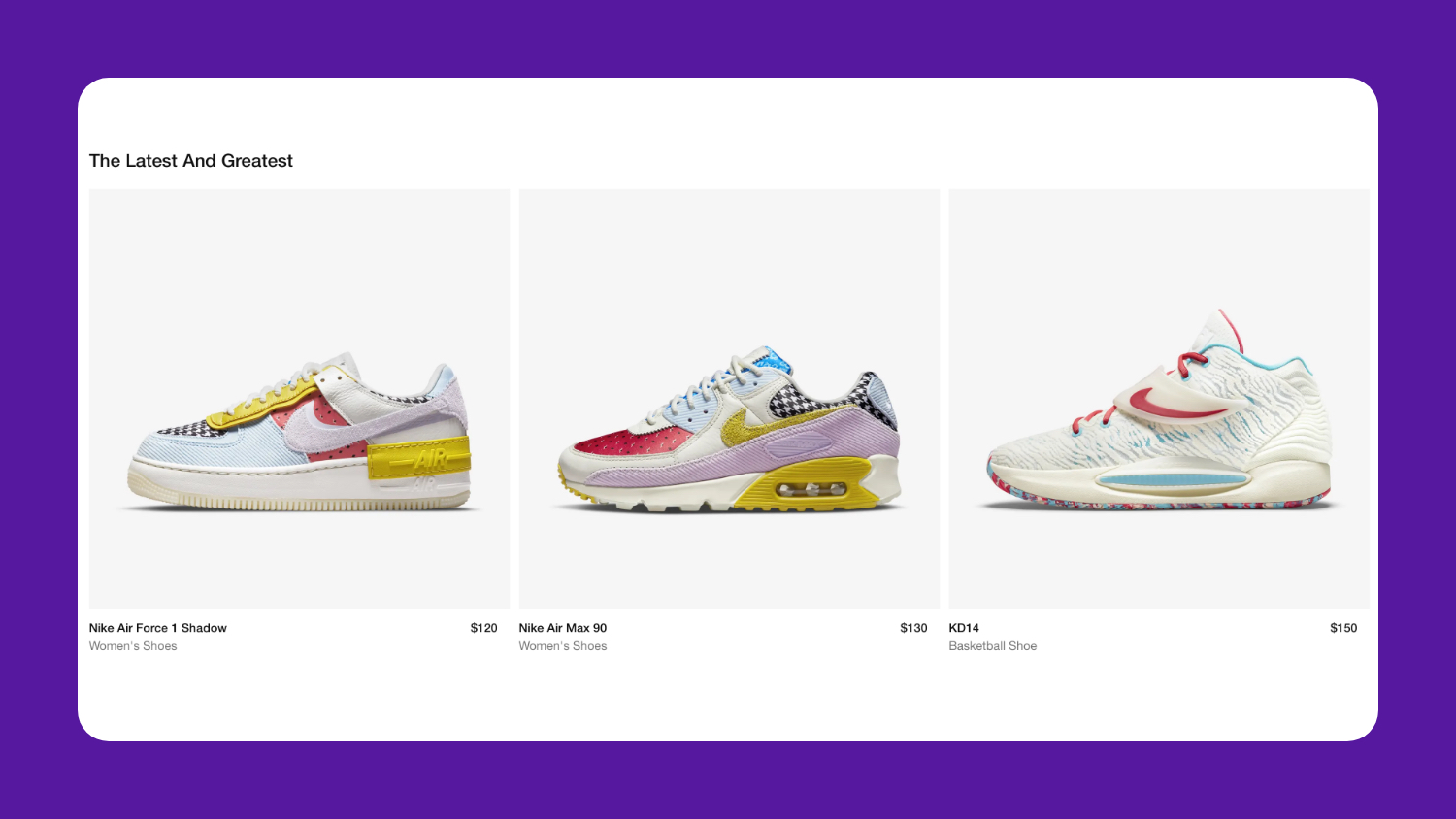
As you can see, this page has a headline, three images, the names of each product, and the price for the U.S. market. But the same website, accessed in French, serves up completely different products, along with euros, for a French audience:

This is localization in action. The website includes the same main components — a headline, three images, and prices — but changes the content (different copy strings and different images) based on the language. Tailor the same section of the homepage to make the most sense to the local audience, using styles and currencies that match audience preferences.
Localization is what makes a product, website, or service feel like it was made for a local audience, by a local audience — a step beyond translation. A truly successful localization strategy requires companies to adapt their business to the culture of each of their target markets.
Localization considers:
- Translation: Localization is more than word-for-word swaps from your native language to your target language. Localization takes the spirit of a given piece of copy and ensures that the translation makes sense based on the overall brand and target market. This includes slang, pop culture references, overall structure and grammar, and more. Translation and localization are often used interchangeably, but translation is only a small piece of localization. When you engage with a translation service, ask them how they approach localizing materials in the same language for different markets, like Argentina vs. Spain.
- Imagery: They say a picture is worth a thousand words, and that’s even more true when symbols, colors, and other imagery mean something completely different across different cultures. For example, white is a bridal color in many western cultures but one of mourning elsewhere in the world. Localization looks at making sure images make sense for the market.
- User interface: Foreign languages often expand text when compared to English. Take into account the entire user experience includes font sizes, displays, and layouts for vertical languages (often used for Asian countries, like Japan or China) or right-to-left languages like Arabic.
- Payment processes and currencies: Your website and e-commerce platform should be able to process local currencies and different types of payments based on the market. For example, Americans may use credit cards from banks like Capital One or Bank of America that don’t exist in other countries, and vice versa.
This means that many companies with solid localization strategies create specifically adapted versions of their content or offerings for that country. McDonald’s, for example, creates separate menus for every country, like the McSpicy Paneer in India or McMollettes in Mexico. Their menu also looks different in different languages, like a classic burger menu in the U.S.:
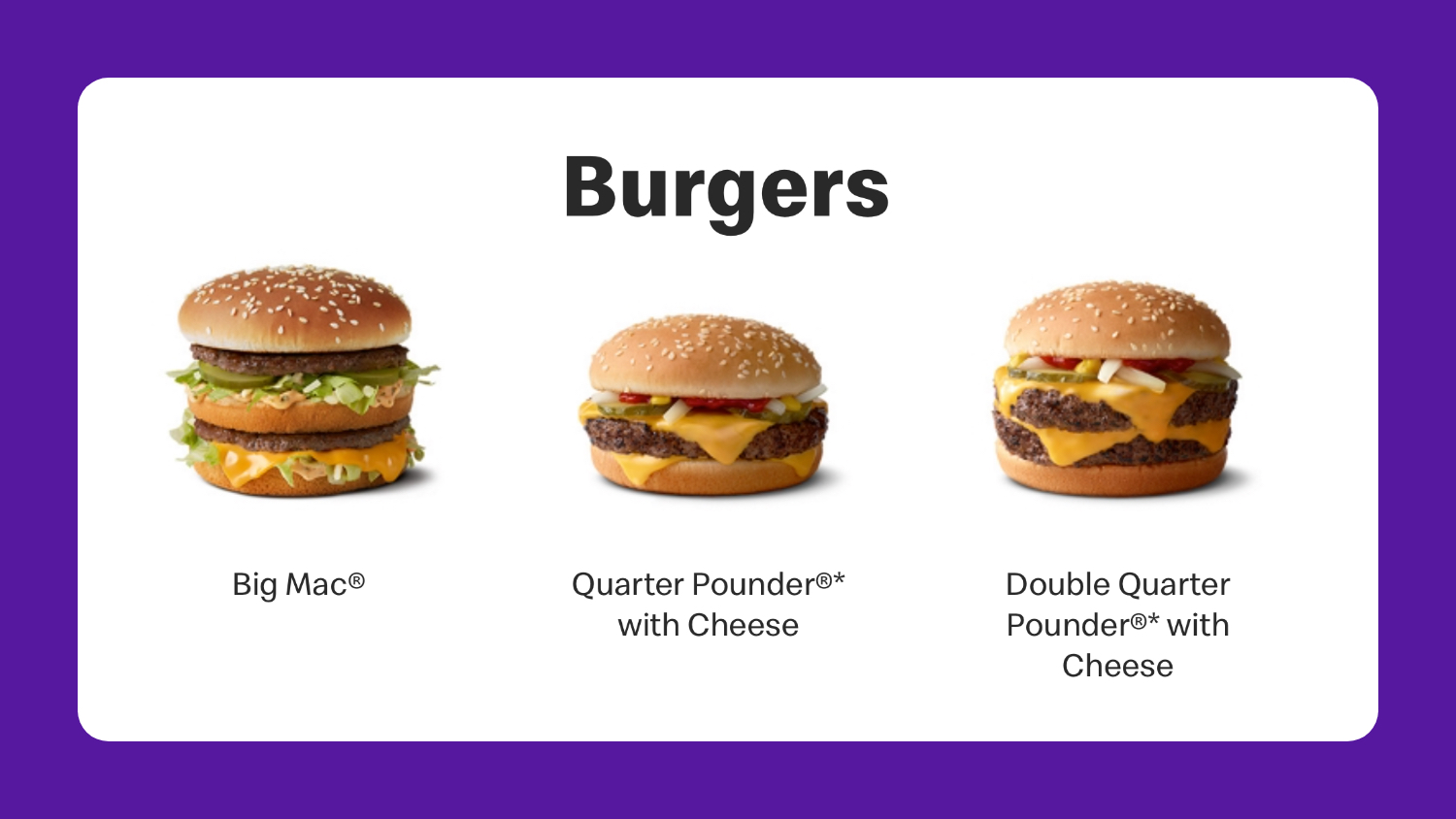
There is no beef at all on the India menu, since cattle are considered a sacred animal for practicing Hindu:
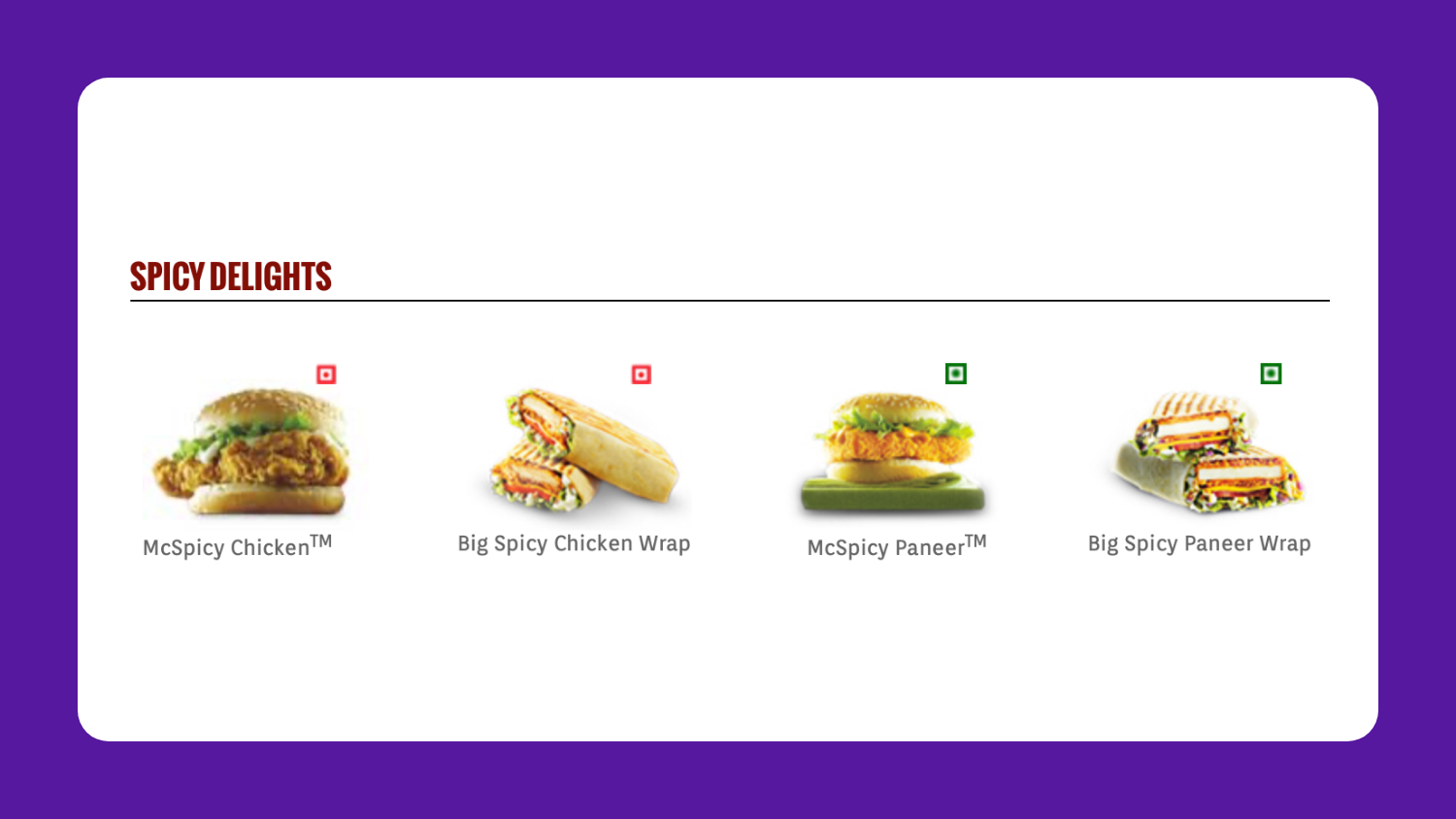
The Mexican menu has many similarities to the U.S. menu, with some slight adaptations:
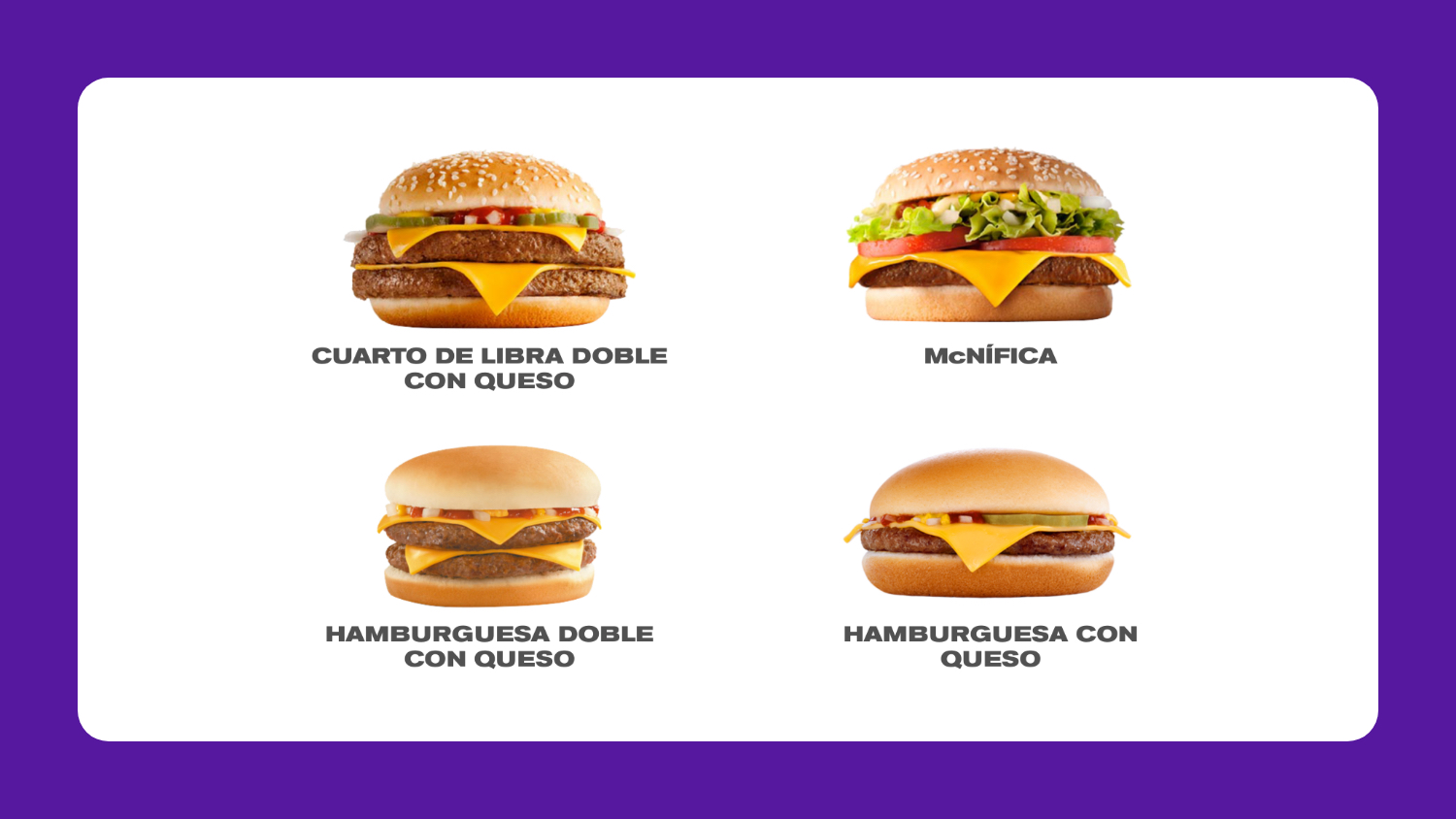
Localization is more than just translation. It’s adapting product offerings and both digital and in-person experiences to resonate with a local audience, which McDonald’s does here in their global menu items. This is one way they can ensure they cater to preferences for their target audience in that country without compromising their global brand.
What is globalization?
Globalization is the more extensive process of operating in international markets; it contains both localization and internationalization. Essentially, globalization is the framework businesses use to go from a single-country product or service to a multinational one.
Globalization gives you the big picture when it comes to your business strategy. Think of it as who you are as a company — creating a global brand and operational model to use across multiple companies.
Globalization considers:
- Market entry strategy: There are many ways to enter a foreign market, from exporting, licensing, franchising, partnering, mergers and acquisitions, greenfield investments, and more.
- Global branding: Determine how (if at all) you want your brand and products to shift in different markets. What is your global market value proposition, and how does it change for international audiences?
- Supply chain: As you expand to multiple markets, you need to ensure you can provide the same level of service. What shipping models will you use, and how is that impacted by global trade regulations, labor, and other international factors?
- Regulations: As you enter new markets, you’re also entering a new set of legal frameworks that manage everything from your hiring process and benefits to what information you can collect and how. For example, in France, GDPR changes your email marketing process for customers, and their right to disconnect law impacts when you can email your employees.
Global companies like McDonald’s employ a combination of localization and globalization. Going back to the different McDonald’s menus, it’s obvious that you’re still looking at the same company. The font, colors, and layouts are very similar, and the convention of adding an “Mc” to their various menu items still applies. Every version of the website includes the same logo and navigation.
This holds true in person, too. No matter where in the world you go to McDonald’s, it still feels like McDonald’s. There may be menu changes (as discussed above), but the global brand remains the same — and millions of people around the world are “lovin’ it.”
Where does internationalization (i18n) fit in?
Internationalization occurs before localization or globalization can even begin, especially for software, applications, or websites. Fundamentally, your operations must be able to handle multilingual web pages, payment types, and other administrative needs and meet international regulations.
Internationalization creates placeholders for translations (often called “strings”) that automatically change to the correct foreign language based on login information. You may have seen examples on websites for retail companies if you accidentally land on their international website — for example:
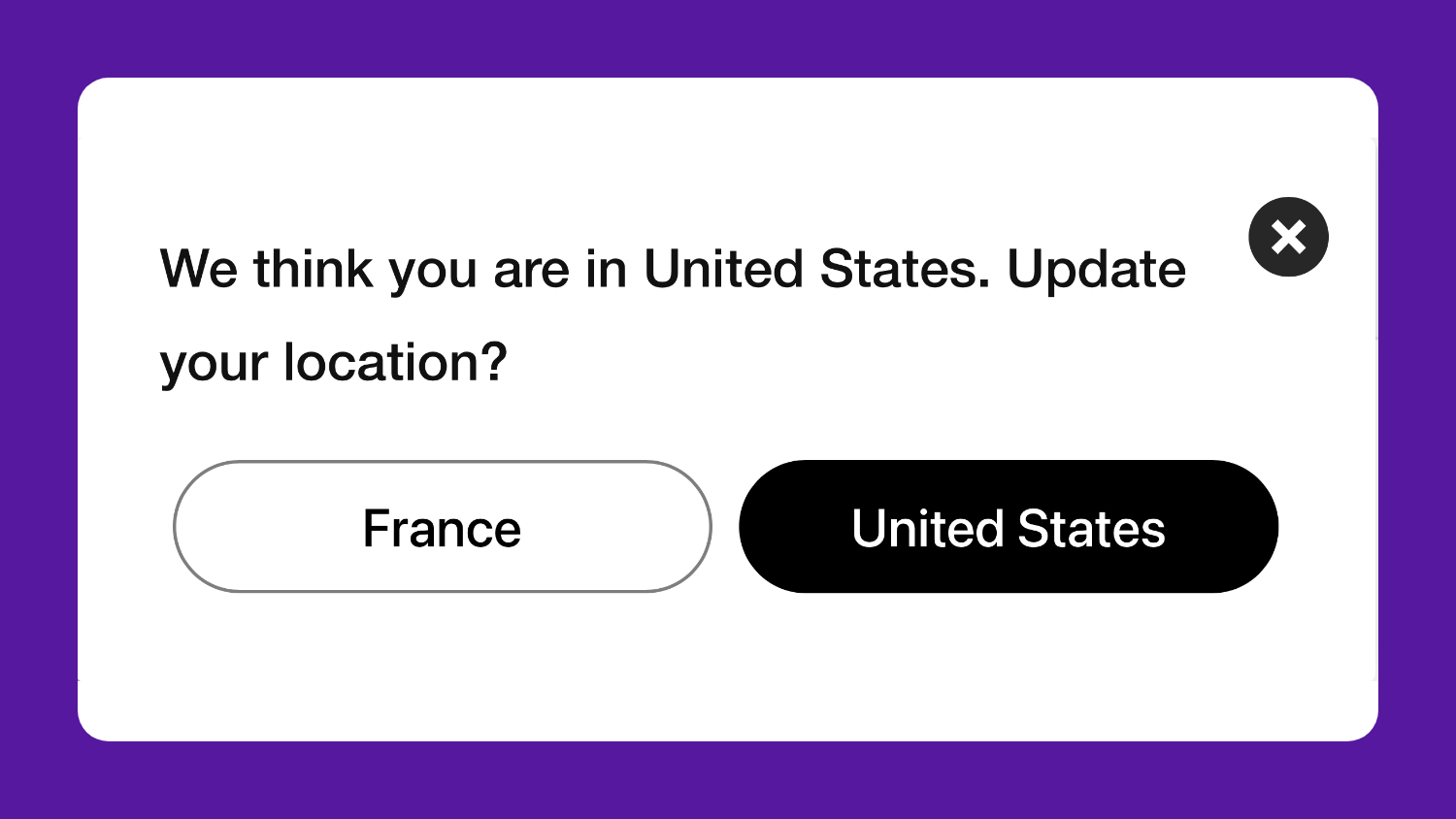
An internationalized website should pick up user location automatically and serve up the appropriate language. But that’s only one piece of the internationalization puzzle. Internationalization considers:
- Language support: Which languages will your website support? Your engineers may need to engage in different practices based on your target languages, like supporting right-to-left languages or vertical ones.
- User interface vs. source code: To complete localization successfully, you must separate UI elements from the source code of the content itself, so no matter what language you’re viewing a given webpage in, it looks the same.
- Numbers and dates: Similarly, your code must recognize different numeral formats, especially when it comes to dates, currencies, calendars, and navigation. A user from the United States would enter “March 17, 2021” for St. Patrick’s Day, but someone from Ireland would write “17 March 2021” instead.
- Names and locations: Your website forms have to accommodate several types of addresses like Mr. and Mrs. But with other languages, you have to consider additional levels of formality, plus changes in name structure. In Japan, for example, family names come first. And in many Spanish-speaking countries, it’s common to have multiple middle names.
Any organization that translates websites into multiple languages must consider internationalization, which Microsoft defines as “a combination of world-readiness and localization.” Ensuring your website and products work with various scripts and cultures is the prerequisite for both localization and globalization processes.
The difference between localization and globalization
Localization focuses on the nuances between markets, such as language, regional dialects, specific cultural references, and imagery. Globalization provides an overarching umbrella that represents your brand and how you do business.
Put another way, your localization strategy focuses on differences across markets while your globalization strategy focuses on similarities.
You don’t choose between the two — they complement one another. Globalization offers a solid foundation for your company as you expand, especially as you offer the same products and services in multiple markets. It’s a global standard that establishes your value proposition regardless of international locale. Localization then adds or changes details or messaging so that it feels more native and accepted in that market.
Do both with Smartling. We provide one comprehensive solution for all of your translation and language services needs, with the flexibility to include human translation, machine translation, or both. Our white-glove project management and automation make localization easy.
Learn more at https://www.smartling.com/.








